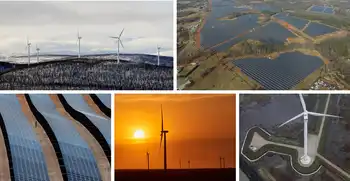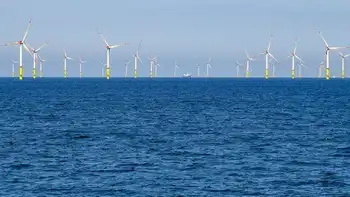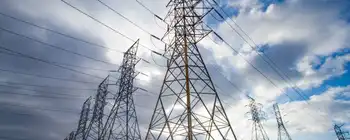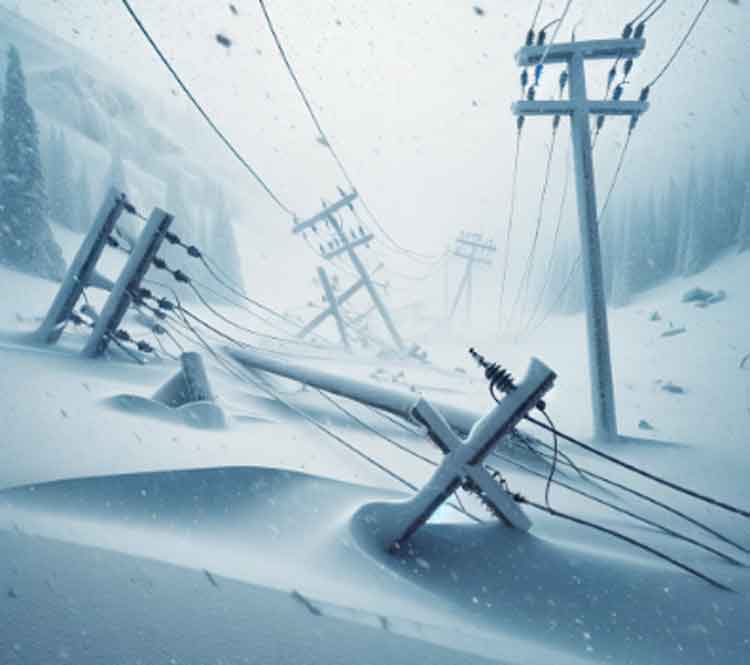Ottawa – - Ottawa – Hans Konow, President and CEO of the Canadian Electricity Association and Roy Staveley, Senior Vice-President of CEA, briefed members of the Senate Committee on Energy, the Environment and Natural Resources on the challenges facing the Canadian electricity with respect to Greenhouse Gas Emissions (GHG) and the potential contribution of energy efficiency programs.
Mr. Konow noted that the challenge of meeting targets set-out in the Kyoto protocol must be viewed in the context of Canada’s future electricity needs. “New demand, plant replacement and exports require significant new electricity capacity to be built over the next twenty years in total to meet an expected demand increase of 35% of 2000 production by the year 2020.” In this context, Mr. Konow reported that “in reality, what the electricity sector could achieve in terms of physical reductions is limited in the Kyoto timeframe because of consumer resistance to demand growth limitations, that there are long-lead times and regulatory issues likely to limit the development of large scale, low GHG sources such as hydro and nuclear in the Kyoto timeframe, and that emerging renewables would only make marginal impact by 2010.” Mr. Konow drew the Committee members’ attention to positive actions the industry has taken with respect to the environmental impact of electricity, notably that “the electricity industry was one of the leaders in the creation of the Voluntary Challenge and Registry (VCR) program and continues to report GHG reductions through various measures, and that CEA’s Environmental Commitment and Responsibility (ECR) program requires all members to have an EMS system in place. Particularly notable is the industry’s Emissions Performance Equivalent Standard (EPES).” With EPES, CEA is the first sector to have tabled a specific plan for addressing climate change with the federal government. Under CEA’s proposal, starting in 2008, all participating utilities would reduce to a specific standard (or better), their net emission rates from oil and coal-fired thermal units that have reached their 40th year anniversary (of commercial start-up). The standard is currently defined to be that of a combined cycle natural gas turbine (CCGT). Mr. Staveley reviewed the electricity industry’s record of energy efficiency initiatives. He noted the effort has been considerable to date, and likely to grow over the next decade. “Electric utility companies have spent over $750 million on energy efficiency programs since 1990, and the current forecast for the next 5-10 years shows industry spending will exceed $1 billion.” He pointed out however that electric utilities will only implement energy efficiency programs where a business case supports such an investment. Actions to date by industry have yielded significant impact. Mr. Staveley reported that “electric utility companies’ energy efficiency programming has resulted in over 5 million MWhrs/year of energy savings in 2001, which has reduced GHG emissions by more than 2 million tons per year.” In terms of how more could be accomplished, Mr. Staveley suggested “better alignment of federal and provincial policy and program activity would enhance energy efficiency, as well as regulatory reform and incentives to accelerate and increase energy efficiency programming and technology deployment.” Founded in 1891, the Canadian Electricity Association is the national forum and voice of the evolving electricity industry in Canada. At the heart of CEA is a core of corporate utility companies accounting for about 95 percent of Canada’s installed generating capacity. In addition, major electrical manufacturers, corporate consulting companies and several hundred other companies and individual members are grouped within CEA’s broad structure.
In this context, Mr. Konow reported that “in reality, what the electricity sector could achieve in terms of physical reductions is limited in the Kyoto timeframe because of consumer resistance to demand growth limitations, that there are long-lead times and regulatory issues likely to limit the development of large scale, low GHG sources such as hydro and nuclear in the Kyoto timeframe, and that emerging renewables would only make marginal impact by 2010.”
Mr. Konow drew the Committee members’ attention to positive actions the industry has taken with respect to the environmental impact of electricity, notably that “the electricity industry was one of the leaders in the creation of the Voluntary Challenge and Registry (VCR) program and continues to report GHG reductions through various measures, and that CEA’s Environmental Commitment and Responsibility (ECR) program requires all members to have an EMS system in place. Particularly notable is the industry’s Emissions Performance Equivalent Standard (EPES).”
With EPES, CEA is the first sector to have tabled a specific plan for addressing climate change with the federal government. Under CEAÂ’s proposal, starting in 2008, all participating utilities would reduce to a specific standard (or better), their net emission rates from oil and coal-fired thermal units that have reached their 40th year anniversary (of commercial start-up). The standard is currently defined to be that of a combined cycle natural gas turbine (CCGT).
Mr. Staveley reviewed the electricity industry’s record of energy efficiency initiatives. He noted the effort has been considerable to date, and likely to grow over the next decade. “Electric utility companies have spent over $750 million on energy efficiency programs since 1990, and the current forecast for the next 5-10 years shows industry spending will exceed $1 billion.”
He pointed out however that electric utilities will only implement energy efficiency programs where a business case supports such an investment.
Actions to date by industry have yielded significant impact. Mr. Staveley reported that “electric utility companies’ energy efficiency programming has resulted in over 5 million MWhrs/year of energy savings in 2001, which has reduced GHG emissions by more than 2 million tons per year.” In terms of how more could be accomplished, Mr. Staveley suggested “better alignment of federal and provincial policy and program activity would enhance energy efficiency, as well as regulatory reform and incentives to accelerate and increase energy efficiency programming and technology deployment.”
Founded in 1891, the Canadian Electricity Association is the national forum and voice of the evolving electricity industry in Canada. At the heart of CEA is a core of corporate utility companies accounting for about 95 percent of CanadaÂ’s installed generating capacity. In addition, major electrical manufacturers, corporate consulting companies and several hundred other companies and individual members are grouped within CEAÂ’s broad structure.
Related News

Amazon launches new clean energy projects in US, UK
WASHINGTON - Amazon is launching three renewable energy projects in the United States and the United Kingdom that support Amazon’s commitment to using net zero carbon energy by 2040.
The U.K. project is a wind farm on the Kintyre Peninsula in Scotland. It will generate 168,000 megawatt hours (MWh) of clean energy each year, enough to power 46,000 U.K. homes. It will be the largest corporate wind power purchase agreement (PPA) in the U.K.
The other two are solar projects – one in Warren County, N.C, and the other in Prince George County, Va. Together, they are expected to generate 500,997 MWh…




